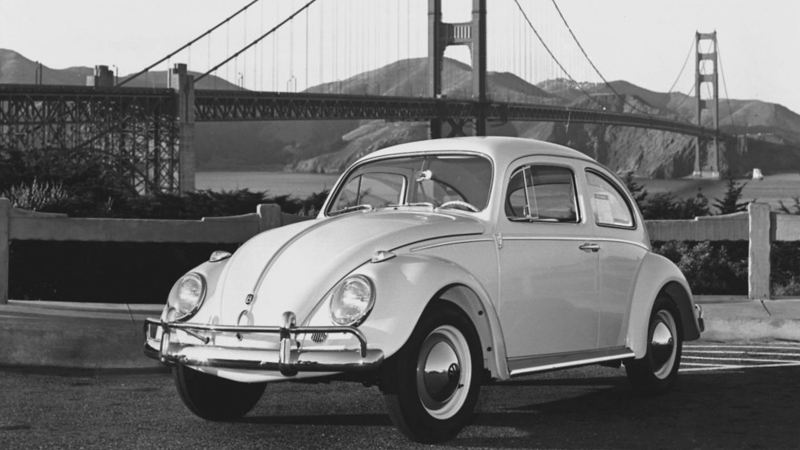An Overview of One of the World’s Most Recognized Automobile Brands
When folks see the classic VW badge, they know they’re looking at a Volkswagen. From the iconic Beetle to the ultra-modern VW ID.4, Volkswagen is one of the most recognizable car brands in the world.
Originally founded in 1937 by the German Labour Front, Volkswagen has become a symbol of German engineering and innovation. However, that hasn’t always been the case. Over the past 80 years, Volkswagen has gone through many cultural and technological changes, which make VW one of most enduring car manufacturers of all time.
In this blog, we’ll take a brief look at the history of Volkswagen, from its founding to the modern-day Volkswagen Group. The next time you’re shopping for new cars for sale in Kansas City and spot a VW, you’ll know exactly how the automaker came of age.
Click here – Guide for choosing a tube laser cutting machine
The Early Days of VW
The roots of Volkswagen can be traced back to 1930s Germany with the roll-out of the KdF-Wagen, which would go on to become synonymous with the National Socialist Party. During this time, owning a vehicle wasn’t financially feasible for the average person living in Germany. The goal of the KdF-Wagen was to introduce an affordable car to the market.
The Kdf-Wagen was intended to be mass-produced, which meant that a factory would need to be built in Germany. In 1938, construction of the factory began in Wolfsburg, but was put on pause due to the outbreak of World War II. By the end of the war, only two prototypes of the KdF-Wagen had been made. However, these vehicles served as a stepping stone for Volkswagen to build its first production model, the Type 1 Beetle.
Planning the People’s Car Project
“Volkswagen” literally translates to “the people’s car.” The Volkswagen “People’s Car” project – referred to as “Volkswagenwerk” – was an initiative that kicked off in the 1930s. Ferdinand Porsche was appointed to design and oversee the construction of what would eventually become the VW Beetle. Outfitted with a rear engine with rear-wheel drive, the Beetle could reach up to 62mph, which were optimal cruising speeds on the Reichsautobahn roadway system.
Post-War VW Beetle Production
Once World War II concluded, Volkswagen was at a pivotal point in its history. In 1945, American troops had liberated the city of Wolfsburg. The VW factory would eventually be seized by the British military government. Major Ivan Hirst assumed the title of Senior Resident Officer at the VW factory. Upon discovering the Beetle, Hirst became inspired by the vehicle and put in an order of 40,000 cars to be dispersed to the British military administration.
In 1949, the British handed over the trusteeship of Volkswagenwerk GmbH to the newly established German federal government. Heinz Nordhoff was named CEO and the production of VW vehicles ramped up in a big way, kicking off what is now referred to as the “economic miracle.”
In 1950, VW added the Type 2 Transporter model (aka the Microbus). By 1952, the automaker was producing over 100,000 vehicles per year. This figure continued to balloon year-over-year. 1965 marked the first year that VW manufactured over one million vehicles. Volkswagen diversified their offerings by rolling out the Karmann Ghia, the Type 3 Squareback, and a small selection of Type 2 Transporter variants. By 1972, the total number of VW Beetles produced had crossed the fifteen-million-unit benchmark, which exceeded the previous record set by the Ford Model T.
Click here – How many questions do you need to get right to pass the CISA exam?
Aggressive Expansion
The popularity and sales numbers for the VW Beetle eventually declined. Between 1974 through 1990, Volkswagen underwent a significant period of expansion. They rolled out vehicles such as the Scirocco, the Polo, the Golf, and the Passat. The Golf (sold in North America as the VW Rabbit) would go on to have the most success throughout its many different iterations. In addition to expanding their lineup of vehicles, VW also broadened its market by adding Southeast Asia, South Africa, and Latin America.
With the combination of building high-quality, affordable cars that have mass appeal and the scope of their production, Volkswagen became regarded as one of the most successful manufacturers of the age.
Financial Struggles
In the early days of the new millennium, Volkswagen found themselves in a crisis. Rising production costs and shrinking sales numbers were two of the main pain points. It also didn’t help that VW wasn’t investing in new technology as quickly as their competitors.
In 2003, VW underwent a massive restructuring program so that the company could remain afloat. The restructuring involved significant budget cuts to research and development, plant closures, and massive layoffs. VW needed approximately a decade to make a full recovery. 2012 marked the first year that VW returned to profitability.
Volkswagen in the Modern Era
Currently, Volkswagen is the second-largest automobile manufacturer in the world. Company health and stability have never been better. VW produces vehicles in 15 different countries and has a workforce exceeding 670,000 people.
One of the big moves the automaker has made recently is committing to electric vehicles. The VW ID.4 – their debut EV – was the winner of the 2021 World Car of the Year Award. The plan is to release several more electric vehicles that are high-quality yet affordable for the typical consumer.
VW is also committed to making their vehicles safer, more efficient, and more advanced in their technology. In addition to broadening their EV offering, Volkswagen will continue to produce fuel-efficient sedans, coupes, and SUVs. VW vehicles continue to be popular around the world and are currently sold in more than 150 countries.

